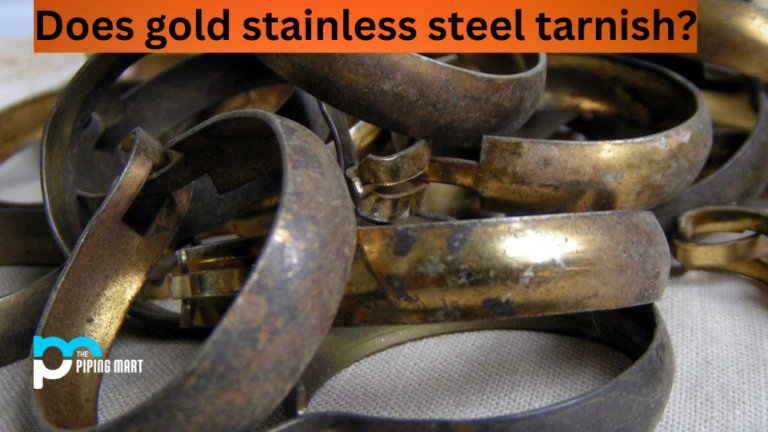

(Other important metals such as titanium and aluminum also rely on passive film formation for their corrosion resistance.) Because of its durability and aesthetic appeal, stainless steel is used in a wide variety of products, ranging from eating utensils to bank vaults to kitchen sinks. For example, 304 stainless steel with a nickel content of 8-10 and a chromium content of 18-20 will typically not rust. The higher the chromium-nickel content, the greater the resistance to corrosion. In summary, stainless steel does not rust because it is sufficiently reactive to protect itself from further attack by forming a passive corrosion product layer. Gold stainless steel will not tarnish in the same way that regular silver or gold will however, it can still be affected by environmental factors such as humidity, dust, dirt, etc. Generally, if the chromium content is 10.5, the stainless steel is less likely to rust. As such, this film, otherwise known as rust, achieves sufficient thickness to make it easily observable soon after exposure to water and air. Common inexpensive steel, in contrast, reacts with oxygen from water to form a relatively unstable iron oxide/hydroxide film that continues to grow with time and exposure to water and air. Stainless steel is a super strong and long-lasting metal, being. Thus, although the steel is corroded on the atomic level, it appears stainless. Surgical steel navel rings are made from a particular type of stainless steel which is resistant to scratches and rust. Most of the jewelry produced and sold by ORYA Jewelry is in gold plated stainless steel. The fact that the film is much thinner than the wavelength of light makes it difficult to see without the aid of modern instruments. Because the film forms so readily and tightly, even only a few atomic layers reduce the rate of corrosion to very low levels. The presence of the stable film prevents additional corrosion by acting as a barrier that limits oxygen and water access to the underlying metal surface.

In fact, all stainless steels by definition contain at least 10 percent chromium. Chromium plays a dominant role in reacting with oxygen to form this corrosion product film. These elements react with oxygen from water and air to form a very thin, stable film that consists of such corrosion products as metal oxides and hydroxides. This procedure was first developed in the 1830s and is now widely used due to its low cost and wide array of benefits. Stainless steel contains iron, chromium, manganese, silicon, carbon and, in many cases, significant amounts of nickel and molybdenum. Silver plating, or silver electroplating, is the process of depositing a thin layer of silver on a base metal, such as copper, nickel, etc. Stainless steel remains stainless, or does not rust, because of the interaction between its alloying elements and the environment.
WILL STAINLESS STEEL TARNISH FREE
Free of the University of Utah offers this explanation:


 0 kommentar(er)
0 kommentar(er)
